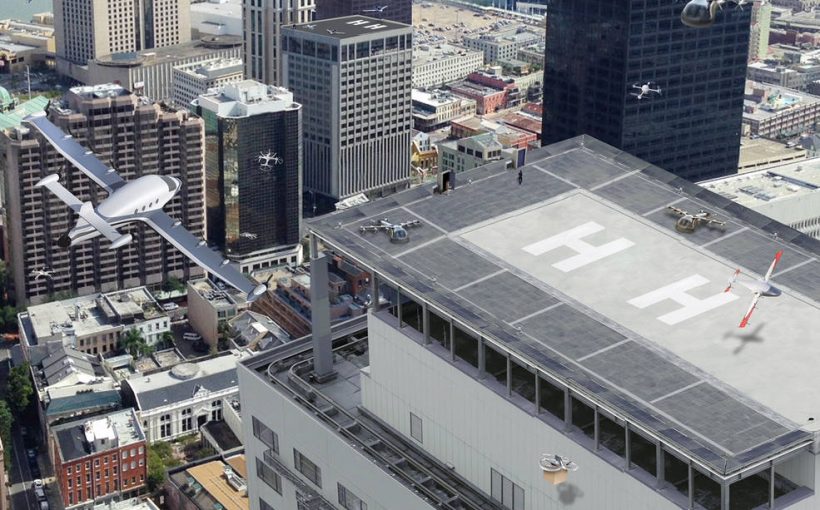NASA’s Aeronautics Research Mission Directorate (ARMD) has updated its strategic implementation plan to include research into Urban Air Mobility, or UAM.
According to the agency:
“Our definition for UAM is a safe and efficient system for air passenger and cargo transportation within an urban area, inclusive of small package delivery and other urban Unmanned Aerial Systems (UAS) services, which supports a mix of onboard/ground-piloted and increasingly autonomous operations. Several companies, both large and small, are starting to develop the infrastructure to make UAM a reality, and they are planning to do this much sooner than you think.
“Fortunately, we’re ready to meet the increasing emphasis on UAM thanks to our decades of successful work on improving air traffic management and, more recently, the past six years of work on how to safely integrate UAS, more commonly known as drones, into the national airspace on a routine basis. We’ve created effective partnerships with industry, academia and the Federal Aviation Administration (FAA) to identify and seek solutions to the challenges unique to accommodating remotely piloted aircraft.”
“NASA has the knowledge and the expertise to help make urban air mobility happen,” said Jaiwon Shin, NASA’s associate administrator for aeronautics. “We plan to conduct the research and development, and test the concepts and technologies that establish feasibility and help set the requirements. Those requirements then serve to make using autonomous vehicles, electric propulsion, and high density airspace operations in the urban environment safe, efficient and economically viable.
“Community acceptance of UAM operations is another challenge. While demonstrating safe and reliable operations is critically important, it is equally important that vehicle operations don’t create unacceptable community noise impacts, and that they fit into the urban land and skyscape.
“NASA won’t have a direct hand in providing design input for these vehicles, but we can provide technical leadership in areas that require the UAM community to work together, such as the safety, operational integration, and community noise challenges. For example, we and our industry partners can conduct joint flight tests to generate data that drive analyses to support the creation of industry standards, FAA rules and procedures, and even city ordinances.
That’s the type of role NASA is likely to play as the UAM-related work is laid out and begins.
“We believe our job is to create opportunities for the UAM community to work together toward the common goal of safe, efficient and quiet operations,” said Rich Wahls, NASA’s strategic technical advisor in the Advanced Air Vehicles Program for ARMD. “We have a unique role to play in leading collaborative efforts that leverage the knowledge, technologies and visions of everyone coming to the table.”
ARMD recently awarded contracts to Booz Allen Hamilton of McLean, Virginia and Crown Consulting, Inc., of Arlington, Virginia to conduct thorough UAM market studies. These studies will spell out the policy, economic, social, environmental, and legal barriers to enabling UAM; and estimate how much potential demand there is for UAM now and in the future.




